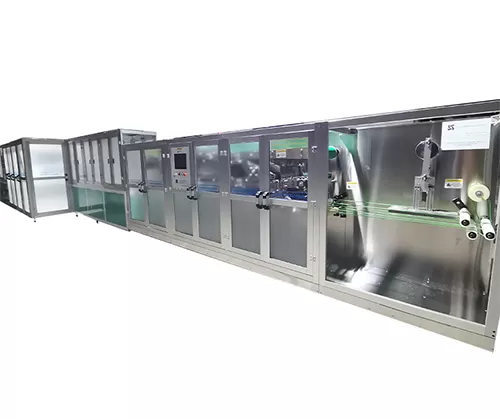In an era where efficiency and cost control define competitive manufacturing, automating non-woven folding processes isn’t just an upgrade—it’s a necessity. This article breaks down how investing in automated folding machines can reduce labor costs by up to 40% while delivering rapid ROI. We’ll provide actionable formulas, real-world examples, and hidden savings most manufacturers overlook.

Manual vs. Automated Labor Costs:
Compare hourly wages for manual folding operators (e.g., 20–30/hour) vs. automated systems requiring only 1–2 technicians for oversight.
Hidden Labor Expenses:
Include training, turnover, human error (e.g., material waste from inconsistent folds), and OSHA compliance risks.
Industry Trends:
Rising minimum wages and labor shortages driving demand for automation.
Scenario Analysis:
Example: A mid-sized PPE manufacturer with 10 manual folding stations:
Manual Process: 10 workers x 25/hour x 8hours=∗∗2,000/day**.
Automated Process: 2 technicians x 30/hour x 8hours=∗∗480/day**.
Daily Savings: 1,520(76 364,800 (240 workdays).
Scaling with Demand:
Automated non-woven folding machine handles surges without hiring/training new staff (e.g., pandemic-driven PPE spikes).
ROI Formula:
Variables to Include:
Machine Cost: 50,000–200,000 (varies by speed, customization).
Net Annual Savings: Labor savings + reduced waste + energy efficiency gains.
Payback Period: Typically 12–18 months for mid-range machines.
Example Calculation:
Machine cost: $120,000.
Annual labor savings: $364,800.
Reduced material waste: $15,000/year (from precise folding).
Energy costs: +5,000/year(offsetbysavings).∗∗NetAnnualSavings∗∗:364,800 + 15,000−5,000 = **374,800 - 120,000} \times 100 = 212% ]
Payback Period: ~4 months.
(Expand the value proposition)
Faster Production Speeds:
Automated machines fold 200–500+ pieces/minute vs. 30–50 manually.
Reduced Downtime:
Advanced sensors prevent jams and misfolds (vs. manual error correction).
Space Optimization:
Compact automated systems free up floor space for other processes.
Quality Consistency:
Eliminate customer returns due to defective folds.
Company: A hygiene products supplier in Texas.
Challenge: Struggling with 15% labor turnover and 20% waste from manual folding.
Solution: Installed a servo-driven folding machine with AI-powered defect detection.
Results:
Labor costs reduced by 42% in 6 months.
Waste cut by 30% (saving $50,000 annually).
ROI achieved in 11 months.
Key Features to Prioritize:
Adjustable Fold Patterns: Handle diverse products (masks, wipes, filters).
Energy-Efficient Motors: Lower long-term OPEX.
User-Friendly Interface: Minimize technician training time.
Ask Your Supplier:
Does the machine include predictive maintenance tools?
Can it integrate with existing production lines?
Adapt to Market Shifts:
Reprogram machines for new products (e.g., switching from medical masks to eco-friendly packaging).
Software Upgrades:
IoT-enabled machines improve over time with remote updates.
Automated folding machines aren’t just a cost-cutting tool—they’re a growth accelerator. With ROI achievable in under a year and labor savings exceeding 40%, the question isn’t if you should automate, but how soon.